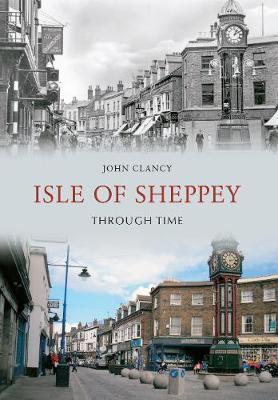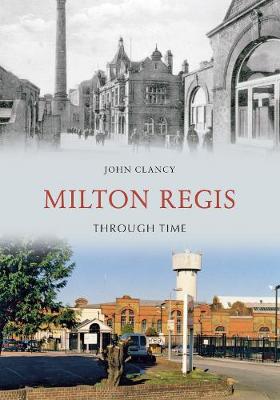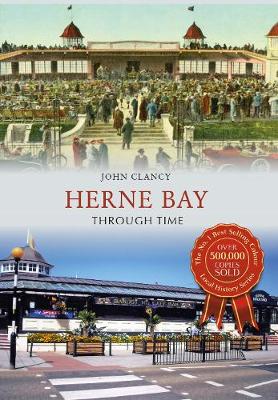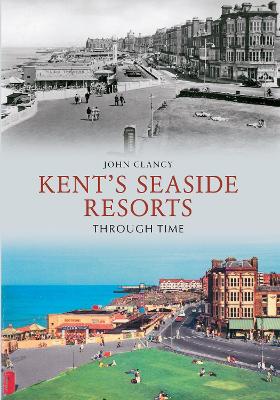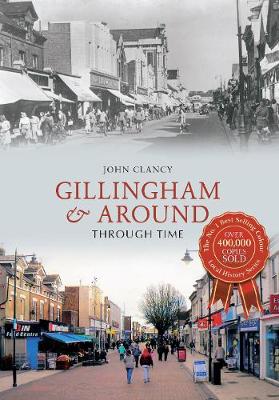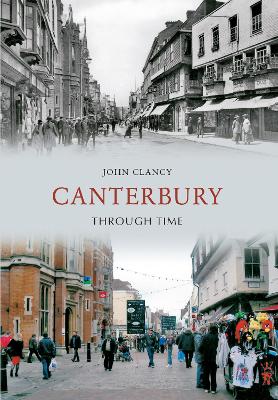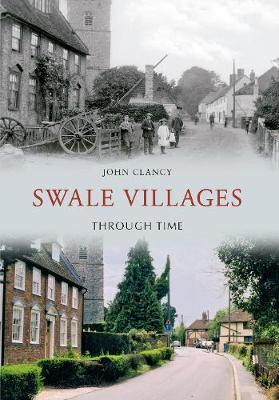Through Time
7 total works
This fascinating selection of photographs traces some of the many ways in which Isle of Sheppey has changed and developed over the last century.
Using images of Isle of Sheppey dating from a hundred and fifty years ago until the present day the reader is taken on a tour of the area.
Using images of Isle of Sheppey dating from a hundred and fifty years ago until the present day the reader is taken on a tour of the area.
Milton Regis, a suburb of Sittingbourne, has had a colourful and eventful history. In the centre of Milton Regis the royal and varied history can be seen in the buildings surrounding the main High Street. This area was once heavily involved in the paper manufacturing industry, an industry still in operation today. The creek was once used as a power source for the mill to operate, as well as being an effective, safe and cheap method of transporting the goods. A museum project is now underway to help restore the area surrounding the creek as the Periwinkle Water Mill Museum. Join local historian John Clancy on this fascinating journey into the past to show what changes this part of the world has witnessed over the years. This new book will be essential reading for anyone who knows and loves this part of Kent.
Herne Bay rose to prominence in the 1830s when a group of London investors recognised its potential and built a pleasure pier and promenade here, making it one of the UK's earliest seaside resorts. Its popularity increased when the railway reached this part of Kent and continued to do so throughout the Victorian era. However, like many other seaside resorts, its popularity as a holiday destination steadily declined after the Second World War when there was an increasing preference for overseas travel.
Following extensive seafront regeneration in the 1990s, a jetty was built to create a small harbour for leisure boats and from where tourists could take boat trips to a seal-watching site in the Thames Estuary. The Victorian seafront gardens were fully restored, as was the Central Bandstand, after many years of neglect and closure to the public. Today, Herne Bay is slowly regaining its popularity as a holiday resort and is a firm favourite with daytrippers. Its glory days are slowly returning.
Following extensive seafront regeneration in the 1990s, a jetty was built to create a small harbour for leisure boats and from where tourists could take boat trips to a seal-watching site in the Thames Estuary. The Victorian seafront gardens were fully restored, as was the Central Bandstand, after many years of neglect and closure to the public. Today, Herne Bay is slowly regaining its popularity as a holiday resort and is a firm favourite with daytrippers. Its glory days are slowly returning.
Kent has one of the longest coastlines in Britain and was at the forefront of the growth of the British seaside industry from the eighteenth century onwards when sea bathing became fashionable. The Kent coast is within relatively easy access of London, so a day trip to the coast became a great attraction for fashionable Londoners. For the most part, transport to these fashionable new resorts was by ship but as some resorts did not have a harbour there was a problem getting passengers ashore.By the mid-nineteenth century the piers had become the most fashionable place to promenade in town. They quickly evolved into attractions in their own right with ornate pavilions containing all sorts of amusements as well as tearooms. Iconic emblems of the seaside experience and unique attractions, the new seaside resorts fiercely contested to have the best showpiece pleasure pier.
Gillingham was once an independent and separate borough with its own character and personality, but in 1998 it lost this separate identity when it joined Chatham, Rochester and Strood to become part of the unitary authority of Medway Council. Today, Gillingham's High Street stretches from the railway station to Medway Park. The original settlement of Gillingham stood on the bank of the River Medway where today there is the Strand leisure park. Together with neighbouring Chatham, Gillingham was home for many servicemen and women. The Navy's connection with the River Medway dates back to the sixteenth century and official records show that by 1547 storehouses had been acquired here, marking the establishment of a Royal Dockyard here at Gillingham. Join author John Clancy on a photographic tour of Gillingham and its environs, showcasing the area's many points of interest.
Canterbury has been evolving as a major ecclesiastical and trading centre for over two millennia. Successions of foreign invaders have each left their mark on the streetscape, giving us the city we have today. Opportunities for archaeologists to explore beneath today's street surface are rare (the Whitefriars Shopping Centre development was one such opportunity) but when it does arise there are untold treasures awaiting discovery.Post-war developments have attracted an ever-increasing number of visitors, not only from all over Britain, but from abroad as well. What makes this book so special is that much of the city centre was destroyed during the air raids of the Second World War, so many of the early views bear little resemblance to what can be seen today. It will therefore, give a flavour of how Canterbury looked before the war.
Many parts of Britain are renowned for the 'chocolate box' quality of their pretty villages, but rarely do people include Swale in North Kent, a delightful rural area known as the Garden of England. Swale extends from Rainham in the west to Faversham in the east, Maidstone in the south to the Isle of Sheppey in the north, covering an area of some 280 square miles. It takes its name from the waterway which separates the Isle of Sheppey from mainland Kent. This book highlights many of the small villages, hamlets and settlements that are scattered throughout this area, which was once renowned for its diverse agricultural practices. But this traditional 'village life' lifestyle is fast disappearing. Swale's villages, like others all over the country, are now but a shadow of their former selves due to changes in agricultural practices. This book offers a taste of how country life once was, compared with how it looks today.
